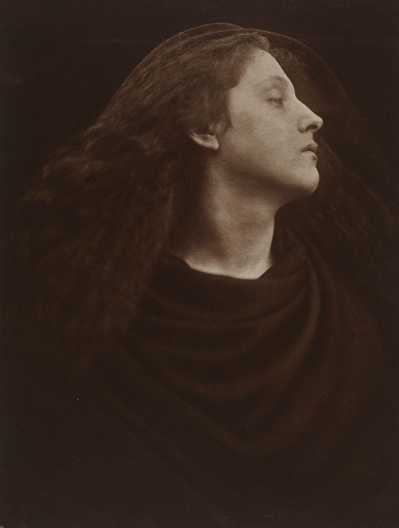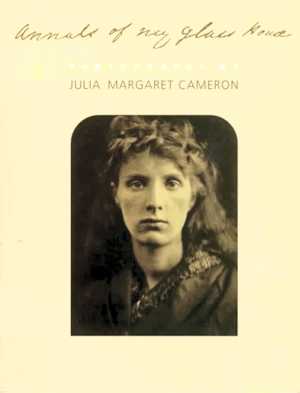줄리아 마가렛 카메론 19세기 인물사진전 'Arresting Beauty: Julia Margaret Cameron' @모건라이브러리(5/30-9/14)
Arresting Beauty: Julia Margaret Cameron
May 30-September 14, 2025
Morgan Library & Museum

Exhibition Featuring the Work of Julia Margaret Cameron, One of the Most Important and Innovative Photographers of the Nineteenth
Century, Opens on May 30, 2025
New York, NY (April 9, 2025) – The Morgan Library & Museum will present Arresting Beauty: Julia Margaret Cameron, a major exhibition exploring the revolutionary work of one of photography’s most pioneering and influential figures. On view from May 30 through September 14, 2025, it brings together a remarkable selection of Cameron’s evocative portraits and staged compositions, offering a rare glimpse into the
artistic vision of a woman who transformed photography into an expressive art form. Organized by the Victoria and Albert Museum (V&A), London, the exhibition features works drawn from the V&A’s extensive holdings of nearly one thousand of Cameron’s photographs, which comprise the largest and most comprehensive collection of her work in the world. Arresting Beauty includes an array of Cameron’s most striking works, including her celebrated portraits of preeminent Victorians, allegorical tableaux, and a selection of her subjects inspired by literature and biblical themes. Also on view are pages from Cameron’s unfinished memoir, Annals of My Glass House.
Colin B. Bailey, Katharine J. Rayner Director of the Morgan, said, “We invite the public to discover the daring and poetic world of Julia Margaret Cameron. This exhibition offers an opportunity to witness the artistry of a woman who redefined photography and secured its place among the fine arts.”
“Julia Margaret Cameron was a pioneer in photography,” said Joel Smith, the Morgan’s Richard L. Menschel Curator of Photography. “At a time when photographers were expected to do little more than find an attractive vantage point and make a correct exposure, she wielded her camera as an instrument of imagination and emotion. Arresting Beauty is a showcase for Cameron’s gaze—one that saw photography not as an exercise in accuracy, but as a pursuit of feeling.”

Julia Margaret Cameron (1815–1879) was born in Calcutta (modern-day Kolkata) to a French mother and an English father. In 1848, with her husband and children, she moved to England, where her sisters introduced her to the elite cultural circles in which they traveled. Residing in Freshwater on the Isle of Wight, where she was close neighbors with the poet Alfred Tennyson, Cameron acquired her first camera at age 48. In only eleven years, she would create thousands of exposures and leave an enduring image of the Victorian era as an age of intellectual and spiritual ambition. “I longed to arrest all beauty that came before me,” Cameron once declared, “and at length the longing has been satisfied.”
Cameron’s prodigious drive helped her become a probing portraitist of leading writers, artists, and scientists such as Tennyson, Thomas Carlyle, George Frederic Watts, and Charles Darwin, while her absorption in fine art, notably Renaissance painting, led her to create staged tableaux in a mode that has been perpetually rediscovered by photographers down to the present. Most distinct of all was Cameron’s wholly personal handling of her medium. Heedless of contemporary conventions of technique, alert to the happy effects of accident, and indifferent to critical scorn, she embraced a style of spontaneous intimacy that distanced her from the photographic establishment of her time and class. Motion blur, highly selective focus, and even fingerprints on the glass negatives (which required developing before their emulsions dried) are among the idiosyncrasies of her singular oeuvre.
Cameron was quick to exploit publishing and promotional opportunities: At London’s South Kensington Museum (now the Victoria and Albert Museum [or V&A]), she secured not only an exhibition in 1865 but also, a few years later, studio space, and she was the first photographic artist to be collected by the institution. Arresting Beauty features prints from the V&A’s initial purchase and from subsequent additions to its holdings.
Within a month of acquiring her first camera, in 1864, Cameron made a portrait and identified it as “my first success.” It depicts Annie Philpot, the daughter of neighbors in Freshwater. The slightly unfocused nature of the image would prove characteristic of Cameron’s style. She later claimed it resulted from stopping short of “screwing on the lens to the more definite focus which all other photographers insist upon.”
Made three years later, in 1867, Call, I Follow, I Follow, Let Me Die! is a stirring depiction of tragic longing. In the image, Cameron concentrates on the head of her maid Mary Hillier by using a darkened background and draping her body in a simple dark cloth. The lack of surrounding detail obscures references to narrative, identity, or historical context. The title, taken from a line in the poem “Lancelot and Elaine” in Alfred Tennyson’s Idylls of the King, transforms the subject into a tragic heroine.
Naturalist Charles Darwin and his family rented a cottage on the Isle of Wight from the Camerons in 1868, about a decade after the publication of his revolutionary On the Origin of Species (1859). Cameron made Darwin’s portrait and, as a savvy businesswoman, published it with an inscription from the famous man: “I like this photograph very much better than any other which has been taken of me.”
Also included in the exhibition are pages from Cameron’s unfinished memoir, Annals of My Glass House (1874), in which she reflects on her artistic journey. Twenty-one pages long, the memoir is peppered with literary quotations, humorous stories, and celebrity name-dropping, written in a tone that alternates between self-deprecating and boastful. It was first published posthumously in the catalogue for the London exhibition Mrs. Cameron’s Photography (1889) and has been reprinted many times since.
The exhibition concludes with portraits made in Ceylon (now Sri Lanka) after Cameron and her husband moved there in 1875. They resemble her previous work in that they are attractive, medium-distance portraits of readily available sitters. But instead of friends or well-known historical figures, the subjects are mainly plantation workers. Her photographic activity was limited in Ceylon, in part due to difficulties in obtaining supplies.
Cameron died there on January 26, 1879, after a sudden illness, leaving behind an influential oeuvre that has provided creative inspiration to generations of photographers.




 프랑스 영화 '금지된 장난'(1952) 복원판 필름포럼 개봉
프랑스 영화 '금지된 장난'(1952) 복원판 필름포럼 개봉
 뉴욕한국문화원 장욱진 특별전 'Chang Ucchin: The Eternal Home'...
뉴욕한국문화원 장욱진 특별전 'Chang Ucchin: The Eternal Home'...

